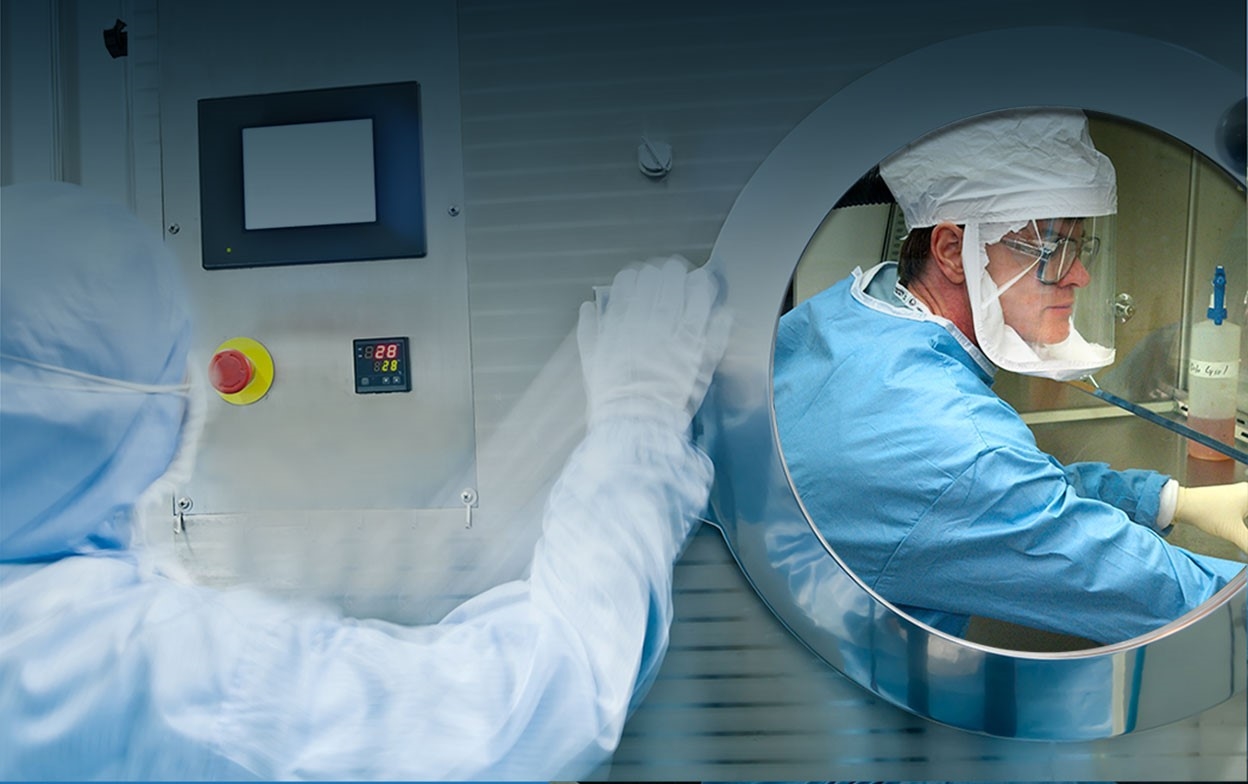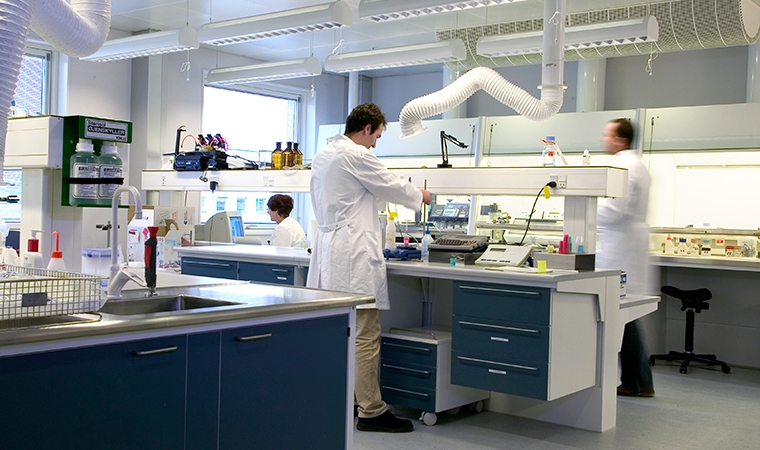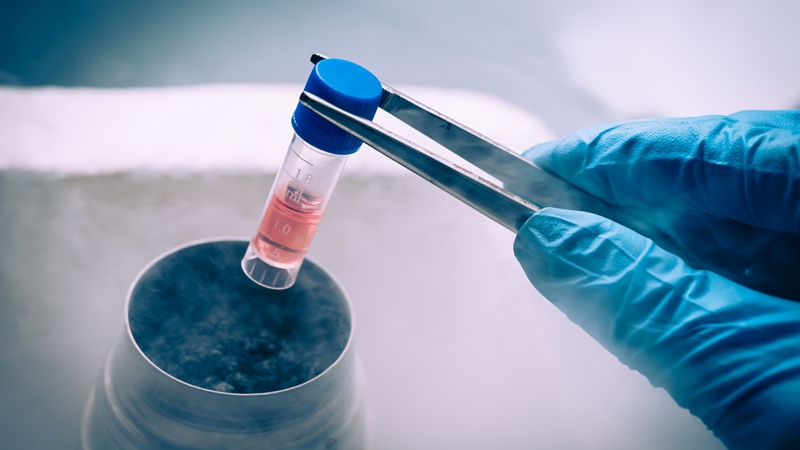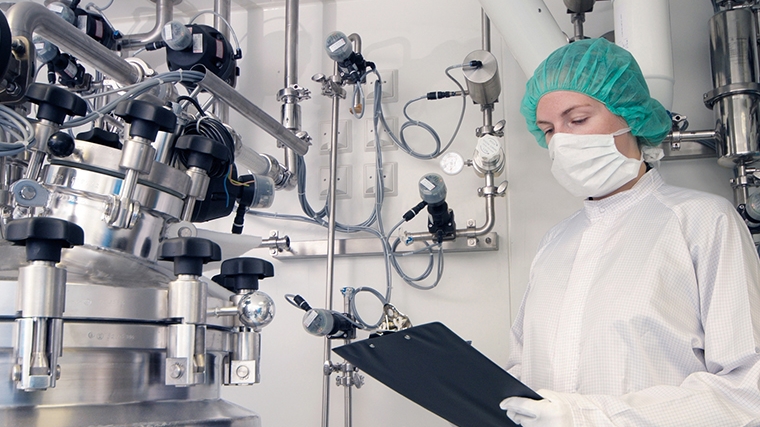The core focus of GMP is protecting the product and the patient. The core focus of biosafety, on the other hand, is protecting the operator and the environment. The challenges are different, but could the solutions be the same? Could new GMP trends trickle down to biocontainment and trigger a new paradigm - Biosafety version 2.0?
A commonly used laboratory technique in the past was “mouth pipetting”. And if you’re in any doubt what “mouth pipetting” is - imagine a person taking a long glass tube. They put one end in their mouth and the other end in a flask of fluid containing a virus or bacteria. It is then (you guessed it) sucked up until they get the desired amount in the pipette.
Of course, we now know: Do not put potent biological substances anywhere near your mouth. Unsurprisingly, mouth pipetting was previously one of the main causes of laboratory derived infections, alongside open handling of biological agents.
However, within biosafety there is still a high degree of manual manipulation of infectious organisms in laboratories and other facilities, albeit with more layers of protection from PPE, equipment and engineering controls. In general, to protect the operator and the environment, Biosafety 1.0 rests on 3 pillars: infrastructure, equipment and management. But because biocontainment facilities are often still based on manual handling of infectious organisms, the risks remain.
New GMP regulations: how can they inspire and improve biosafety?
Within GMP, operators often interact directly with drug substances and products – and up to 80% of GMP cleanroom errors are human-related. But recent GMP regulations lean towards segregating operators from products, focusing more on critical areas and reducing the number of operators with direct product contact, evident in the recent EU GMP Annex 1 draft for sterile manufacturing.
Technological innovation is key to driving these changes. In 2013 the FDA stated that “Conventional cleanrooms are on the borderline of compliance” and “Automation of other process steps, including the use of technologies such as robotics, can further reduce risk to the product”.
Although the challenges are different, the solution to these GMP challenges could support the shift to Biosafety 2.0. Focus should primarily be on:
- Closed barrier systems
- Robotics
- Fully integrated systems (automation/IT)
Using state of the art technologies in Biosafety
To illustrate this further, let’s look at four key examples of how new technologies could be used today:
1. Within isolators, new innovative technologies mean fully closed and integrated systems, where “glove boxes” are replaced by robots and operators control the system remotely using touchscreens. This reduces the risk of human error and has the added benefit of being able to run continuously. This could be used within diagnostic labs analyzing unknown biological organisms.
2. Within biosafety, surgical assistant robots could be used in high containment facilities for large animal autopsies. This would significantly reduce the risk of exposure to potentially hazardous biological agents.
3. For a BSL2 Cell and Gene therapy labs, a closed barrier system for cell expansion and incubation, operated either by robots or remotely by an operator, would again reduce the risk of human error and operator exposure to potent substances. Simultaneously, from a GMP perspective, this also protects the product.
4. Finally, a fully closed and automated filling isolator could be used for large-scale vaccine manufacturing for medium and high containment. However, even with primary containment, the main part of the vaccine segment still poses a biorisk.
Clearly there is room for further innovation and development, but this ongoing technological revolution has the potential to influence biosafety and GMP significantly. Ultimately, it should drive us towards fully closed, automated, and integrated processes with reduced or removed direct operator interaction.
Six steps to a proactive approach: Biosafety 2.0
Considering the main pillars of future biosafety, six core steps towards Biosafety 2.0 include:
1. Focus more on building and maintaining a common, global and sustainable biosafety concept.
2. Use a global biorisk management standard – such as an implemented and enforced ISO standard
3. Use a proactive rather than reactive approach, fronted by biorisk senior management
4. When possible, replace research animals with IT simulations
5. Use engineered biological agents to decrease biosafety level, where possible
6. Use new technologies (Automation/IT, Robotics) for engineering controls
The three pillars of future biosafety: Closed barrier systems, robotics/automation and integrated systems
There is no doubt that this paradigm will suit some high-containment settings better than others. For example, with large-scale pharma manufacturing, there is a lot of synergy between biosafety and GMP. However, smaller, laboratory-scale production (such as a BSL3 diagnostic laboratory) may still need some manual handling alongside isolators.
Lastly, for large scale animal research in high containment, it is unlikely that all operator interfaces will be replaced. This could lead to animal distress and therefore more operator injuries.
Overall, it is evident that biocontainment and biosafety can be inspired and benefit from the latest trends in GMP. Implementing new technologies like automation/IT and robotics can significantly decrease human error and increase operator and environment safety.
But new technologies cannot stand alone. Work with biological organisms is set to increase, hence the need for more biocontainment facilities and more operators. Alongside use of new technologies and reducing manual operations, it is still vital that senior management implements, trains and continuously improves biosafety to lower risk and reach “Biosafety 2.0”.




